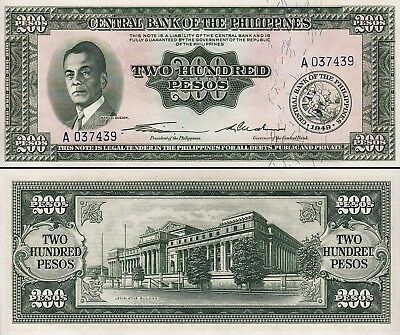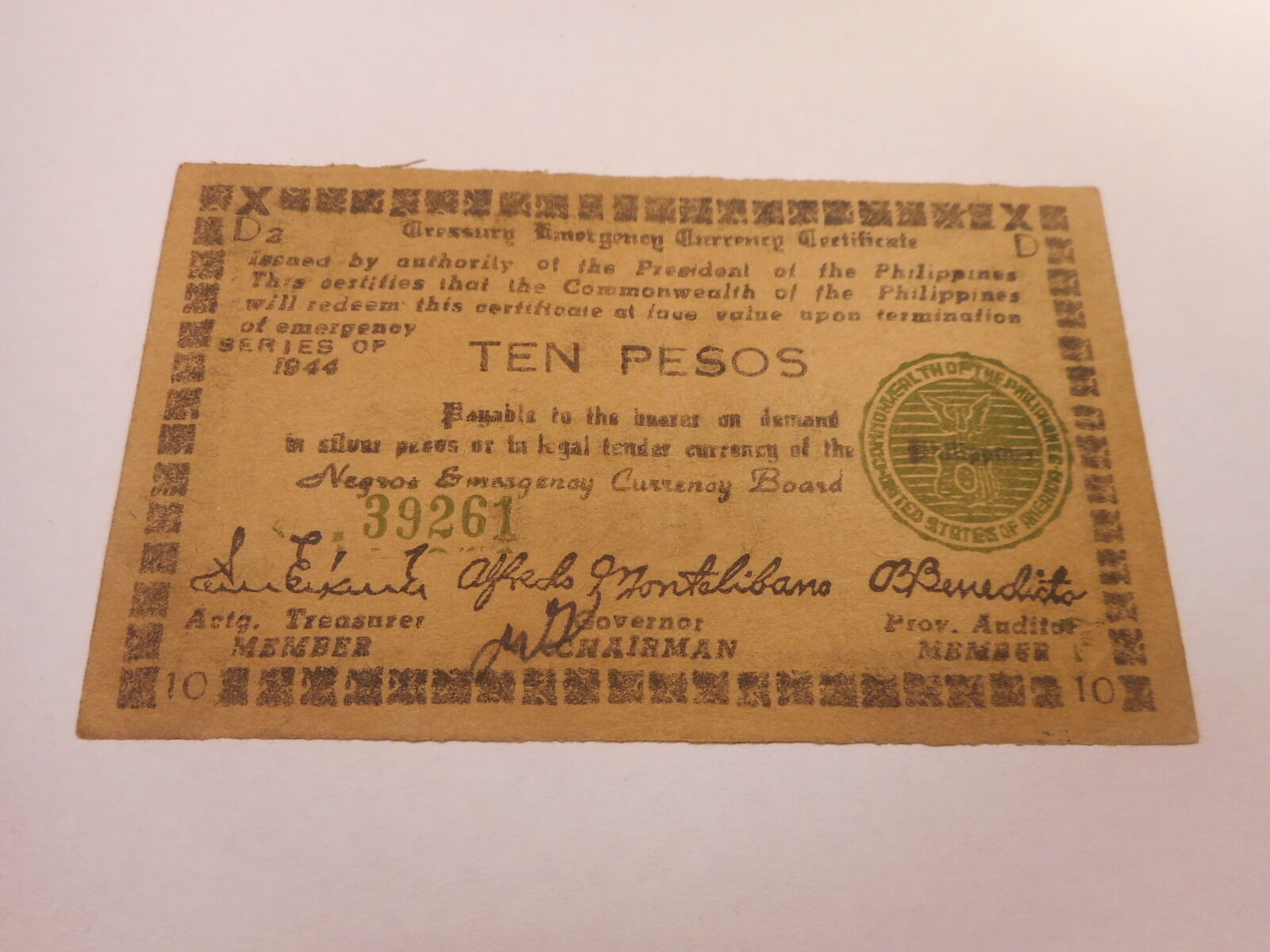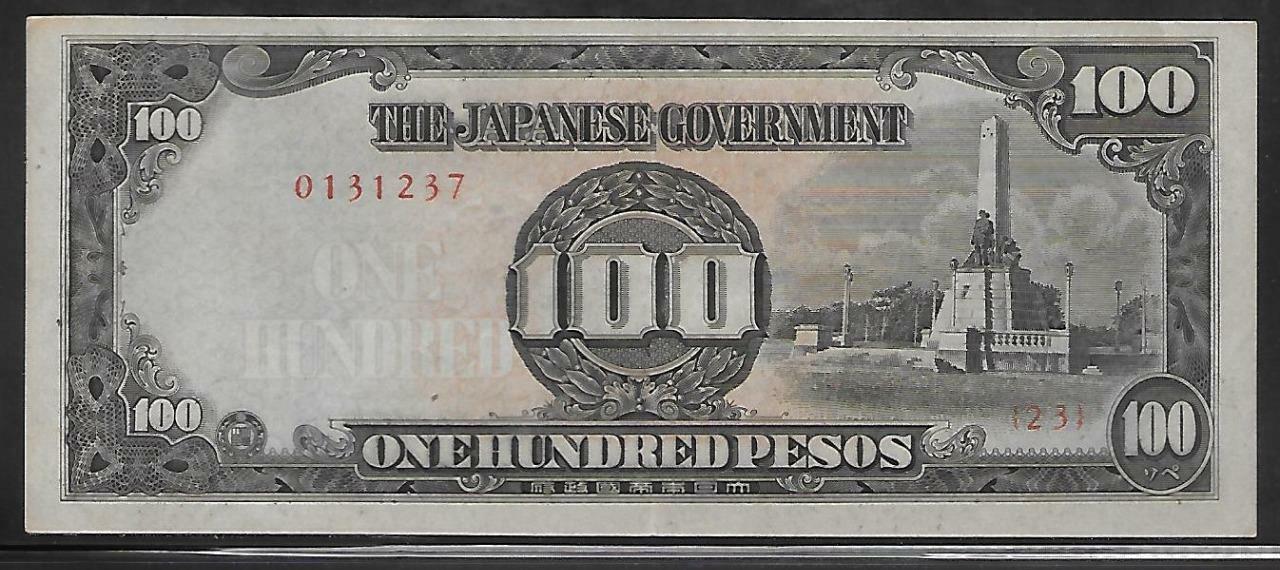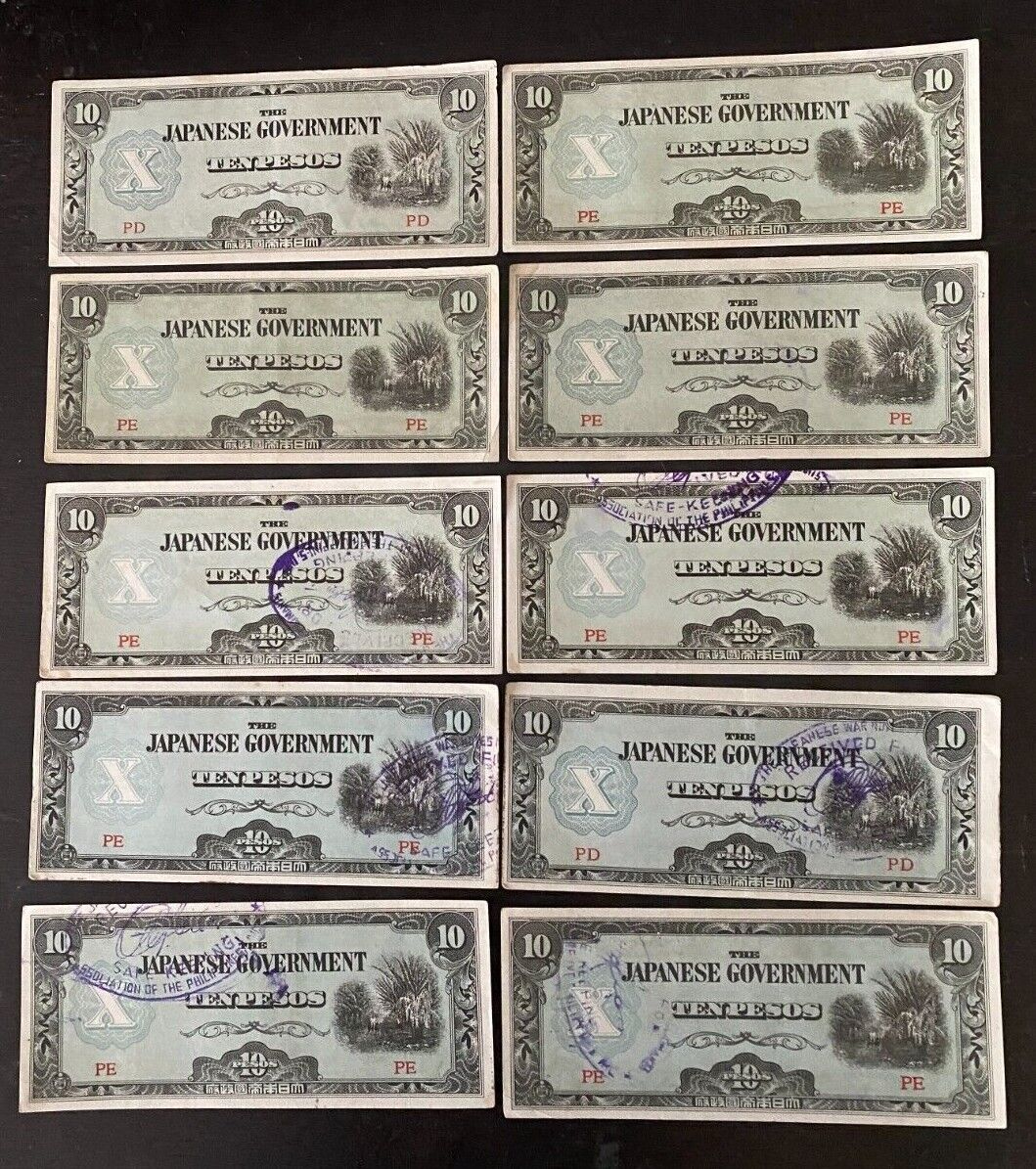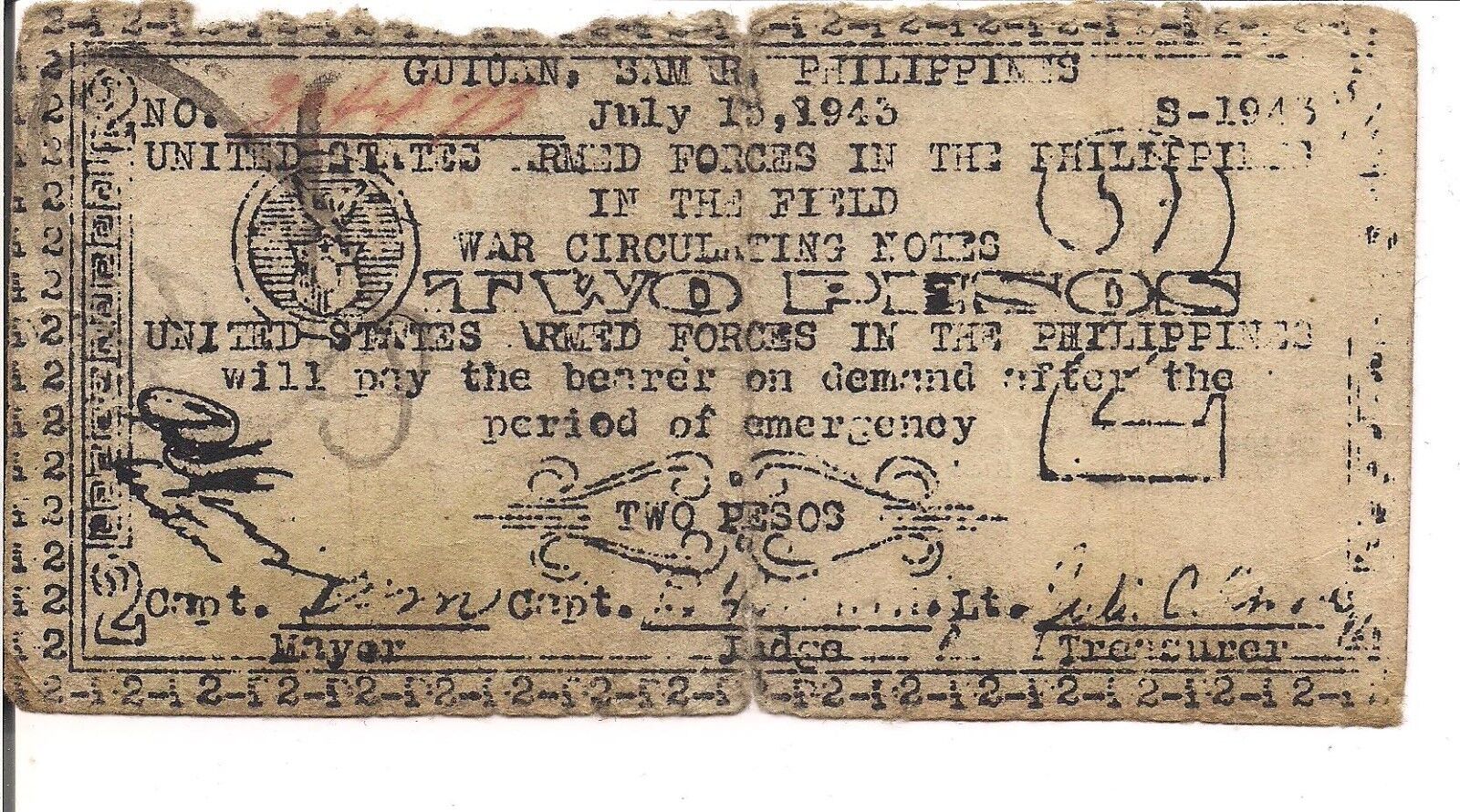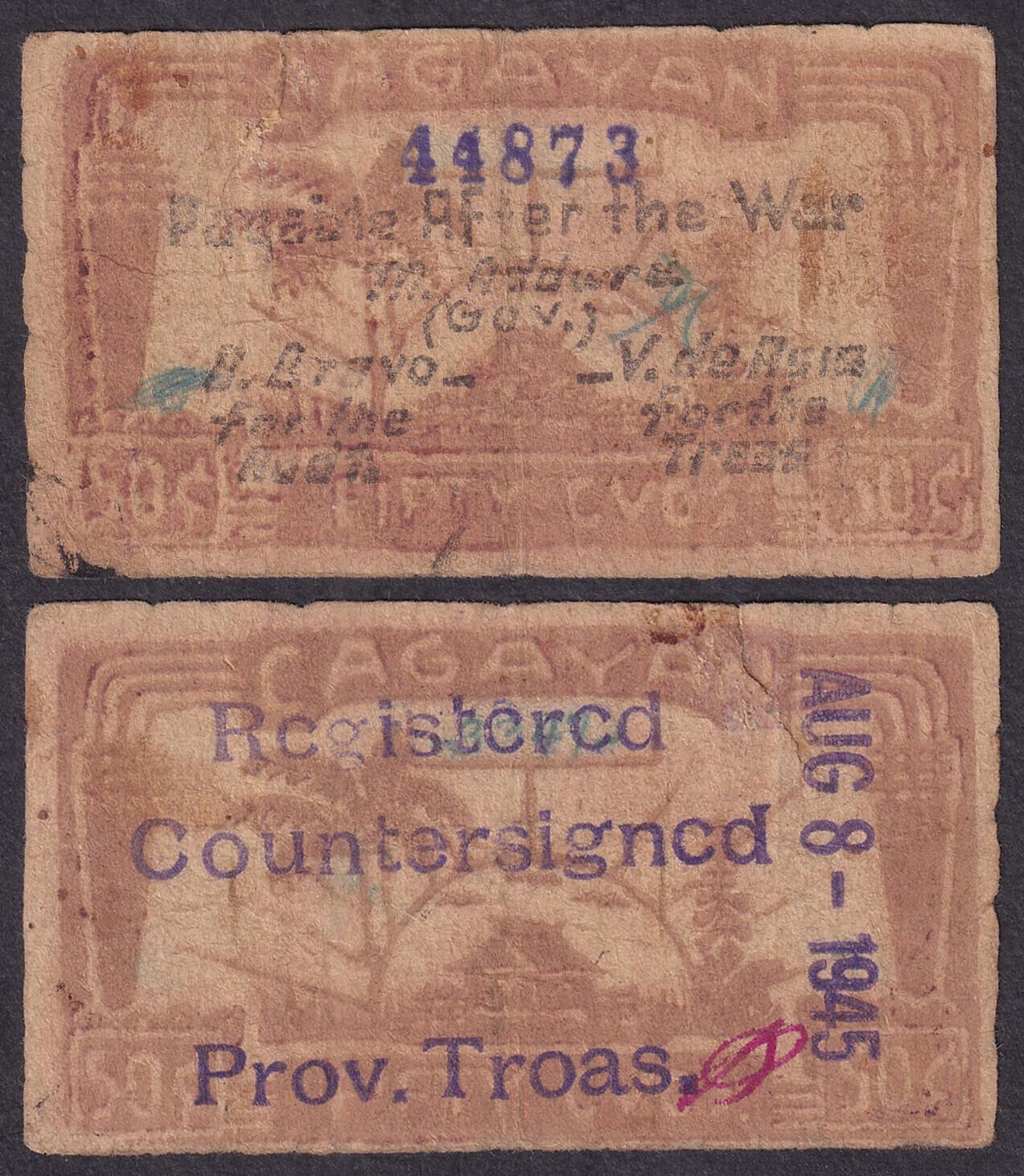-40%
US Philippines 500 Pesos LUZON USAFFE Guerrilla Army WW2 Note #S422
$ 17.42
- Description
- Size Guide
Description


US Philippines 500 Pesos LUZON USAFFE Guerrilla Army WW2 Note #S422
Vertical folds with wear on the sides. Light green stamp of the previous owner on the side.
Dated Feb 22, 1942. Portrait of
President Roosevelt
, with “
Keep ‘Em Flying”
symbol of the Army Air force at reverse.
Facsimile signature of Major Walter M. Cushing and Capt W.H. Stephens. Embossed seal at center.
Guaranteed to be Genuine
Check out my other Philippine Banknotes listed on eBay.ph.
To visit click here -
EBAY PHILIPPINES
Mindanao
Currency Board
Japanese invasion forces landed in 1942 and quickly broke through the defenses of the poorly equipped and mostly untrained USAFFE forces.
In obedience to Gen. Wainwright's orders, Gen. William F. Sharp surrendered the Visayan-Mindanao Force on May 10, but it was not until May 27 that the final surrender took place in Mindanao. In the meantime thousands of soldiers took to the hills.
In Lanao, Lt. Col. Wendell W. Fertig began uniting the guerrillas under his command. In September he proclaimed the establishment of the United States Forces in the Philippines, (USFIP) Mindanao-Sulu Command, with his assumed rank of Brigadier General. Lanao, Misamis Occidental and the northern part of Zamboanga were under his command with Free provincial governments functioning, but it would require another year before all of Mindanao was united under his command and free provincial governments could be established in other provinces.
One of the major problems confronting Gen. Fertig was the matter of money with which to finance both the military force and civil governments. This was temporarily solved when Fertig learned that the Misamis Occidental Currency Committee had issued only a fraction of the currency it had been authorized to print. In December 1942 Fertig ordered the Committee to print the unissued balance of the authorized amount.
In February 1943 Fertig established radio contact with Gen. MacArthur in Australia and was designated by MacArthur as Commanding Officer of the 10th Military District (Mindanao and Sulu), with the rank of Lieutenant Colonel.
In the meantime, Lt. Sam Wilson, supervisor of the pre-surrender printing of currency by the Mindanao Emergency Currency Board, had joined Fertig and told him that this Board also had printed only a part of its authorized amount. Fertig promptly radioed MacArthur of his intentions to reconstitute this Board with new members (original members had surrendered) and resume printing currency under the authority previously granted by President Quezon. MacArthur passed the message on to President Quezon in Washington, who promptly granted his approval. Thus, the second Mindanao Emergency Currency Board came into being.
The new Board consisted of Judge Florentino Saguin as Chairman, with Misamis Occidental Provincial Treasurer Filomena D. Pacana and Provincial Auditor Ireneo Barbasa as Members.
Maj. Sam Wilson (guerilla rank) was assigned to get printing operations underway. Wood border cuts were made for the face of the 2 Pesos note, and for both face and back of the 10 and 20 Pesos notes. The 5 Pesos notes were printed from the same border cuts previously made for the Misamis Occidental printing (#S578). Other denominations were printed entirely from metal type.
Printing operations began on April 5, 1943 at the Rosito Z. Bacarro press in the barrio of Matugas, Municipality of Jiminez, Misamis Occidental. On June 26, the Japanese invaded Misamis Occidental. At the press site thousands of pesos in partly printed currency were burned. The presses were dismantled and hidden in the hills along with printing supplies. At Oroquieta, Treasurer Pacana hastily packed 702,619.30 pesos into sacks and evacuated to the hills.
Driven out of Misamis Occidental, Col. Fertig relocated his headquarters in the barrio Liangan, Municipality of Kolumbugan, Lanao Province. As currency supplies dwindled, Fertig requested that the printing be done in Australia. MacArthur rejected the proposal. Printing supplies, yes; printing currency, no.
Maj. Sam Wilson was assigned the difficult task of getting the presses to Liangan. It took ten days to move the heavy presses from their hiding place in the hills down to the coast. THey were moved by the banca across Iligan Bay at night to avoid Japanese naval patrols. Printing resumed at Liangan on September 6 and ended November 1, 1943 when supplies ran out.
As Japanese activity increased in the Lanao area, Fertig moved his headquarters to Esperanza in Agusan Province. The presses were moved by water transport along the coast and then up the Agusan River.
In the meantime the cargo submarine USS NARWHAL had delivered 90 tons of supplies at Nasipit. Among the supplies were 30 boxes of paper, 27 cans of ink and dryer and 84 metal plates made in Australia for printing currency.
Printing resumed at Esperanza on December 13, 1943 using the metal plates. As no metal plates had been made for either the 5 Centavos or 20 Pesos denominations, these were printed from the same metal type and wood border cuts as previously. Printing ended on January 23, 1944 when supplies ran out.
Once again stepped up Japanese military activity necessitated moving the presses to a safer area. In early February they were moved up the river to Loreto, Agusan. Printing finally got underway on March 18, 1944 after more supplies were delivered by USS NARWHAL.
The Japanese garrisoned Butuan, Agusan, using it as a base of operations and almost daily planes bombed the towns along the river. Esperanza was reduced to rubble, and on July 5, 1944 Loreto was bombed. As further attacks were expected, the presses were dismantled and hidden, and press personnel evacuated to a safer area.
It was October before the Japanese attack abated enough to allow the press personnel to return to Loreto. Printing resumed on November 4, 1944 but was halted in mid-November on instructions from Col. Fertig.
Immediately after printing had ceased at Loreto in July, Sam WIlson and two printing technicians left there carrying with them some of the printing plates. They hiked over mountains to the coast of Misamis Occidental where they obtained transportation by banca along the coast to Dipolog, Zamboanga. The trip took the greater part of two months.
At Dipolog, arrangements were made for use of a small press owned by the Rev. Angel Soto. Printing resumed at the barrio of Tingkugas on September 14 and continued until October 6, 1944 when paper supplies ran out.
It was not until February 27, 1945 after new paper supplies had been brought in by submarine, that printing operations were resumed at the barrio Estaka. On March 8, 1945 the first American liberation forces landed at the guerrilla-held airfield at Dipolog. Military operations placed the press site in jeopardy, so printing was stopped to permit the press to be moved to a safer location.
Printing resumed at the barrio of Calamba, Municipality of Plaridel, Misamis Occidental on April 1, 1945. Printing operations ceased on April 22, on order of Col. Fertig, thus ending the printing of currency by the second Mindanao Emergency Currency Board.
Meanwhile, back at Loreto in Agusan Province, printing operations had resumed on January 2, 1945. As there was only a small stock of paper on hand it was soon exhausted and printing ended on January 5. This printing is mentioned last, as these were only notes dated Series 1945.
A total of 23,613,415 pesos was printed by the second Mindanao Emergency Currency Board.
ON GRADING
The grade I gave is just my opinion and may differ from others. Grading is subjective and not an exact science. Please take a look at the photo and grade it accordingly. Several subjective factors of personal preference may be considered different by others. These include paper texture, quality, color, folds, markings, stains and overall eye appeal.
-----------------------oo0oo-----------------------
Payment and Shipping
Item is as described. We will mail worldwide.
All sales are final. If you have any questions or concerns please e-mail me.
Thank you for your business.
View more great items



